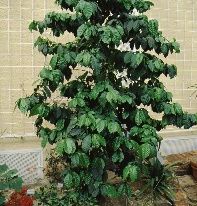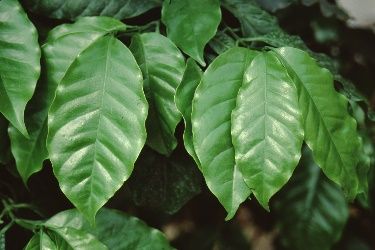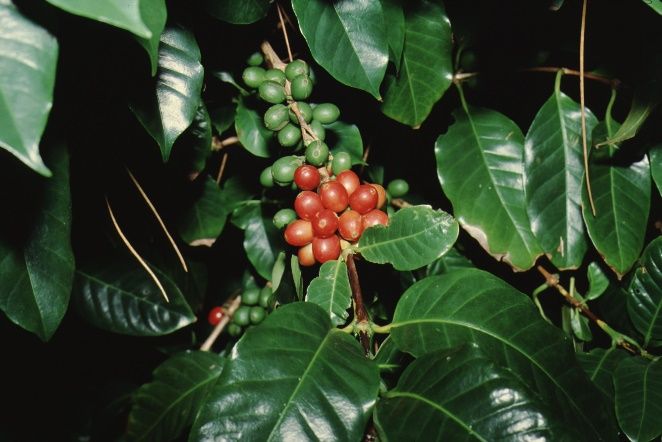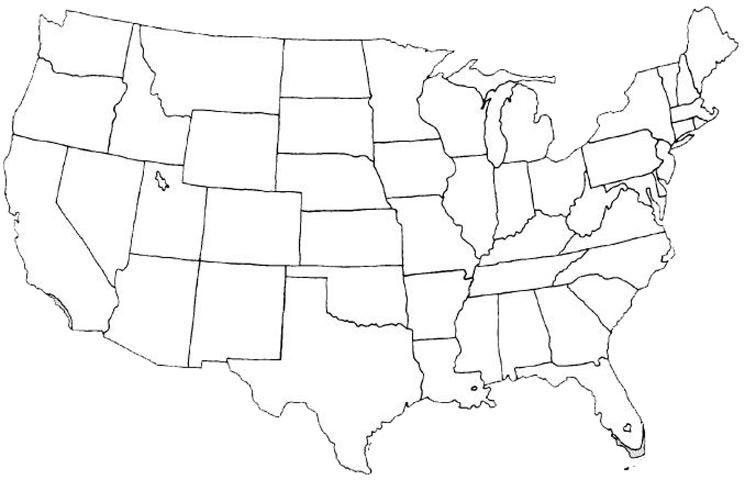Introduction
This medium-textured, dense, upright shrub has glossy, wavy-edged, unusually dark green leaves, fragrant, white, starry-shaped springtime flowers, and showy, fleshy, red berries. Each berry contains two seeds or coffee beans suitable for home roasting and grinding.

Credit: Edward F. Gilman, UF/IFAS

Credit: Edward F. Gilman, UF/IFAS

Credit: Edward F. Gilman, UF/IFAS
General Information
Scientific name: Coffea arabica
Pronunciation: KOFF-ee-uh uh-RAB-bick-uh
Common name(s): coffee
Family: Rubiaceae
Plant type: shrub
USDA hardiness zones: 10B through 11 (Figure 4)
Planting month for zone 10 and 11: year round
Origin: not native to North America
Invasive potential: not known to be invasive
Uses: fruit; specimen; container or above-ground planter; hedge; near a deck or patio; espalier; border
Availability: somewhat available, may have to go out of the region to find the plant

Credit:
Description
Height: 10 to 15 feet
Spread: 8 to 15 feet
Plant habit: round
Plant density: dense
Growth rate: fast
Texture: medium
Foliage
Leaf arrangement: whorled
Leaf type: simple
Leaf margin: entire
Leaf shape: ovate
Leaf venation: pinnate
Leaf type and persistence: evergreen
Leaf blade length: 4 to 8 inches
Leaf color: green
Fall color: no fall color change
Fall characteristic: not showy
Flower
Flower color: white
Flower characteristic: pleasant fragrance; spring flowering
Fruit
Fruit shape: oval
Fruit length: less than .5 inch
Fruit cover: fleshy
Fruit color: red
Fruit characteristic: persists on the plant; suited for human consumption
Trunk and Branches
Trunk/bark/branches: not particularly showy; typically multi-trunked or clumping stems
Current year stem/twig color: green
Current year stem/twig thickness: medium
Culture
Light requirement: plant grows in part shade/part sun
Soil tolerances: clay; sand; acidic; slightly alkaline; loam
Drought tolerance: moderate
Soil salt tolerances: poor
Plant spacing: 36 to 60 inches
Other
Roots: usually not a problem
Winter interest: no special winter interest
Outstanding plant: plant has outstanding ornamental features and could be planted more
Pest resistance: long-term health usually not affected by pests
Use and Management
Reaching a height of 15 feet, coffee tree is a great conversation piece, growing in light rich soil and partial shade. Regular pruning can keep the plant attractive at any desirable size. This handsome shrub is suitable for containers, specimen plantings, or used as a small understory tree in hammocks and wild wooded areas. It also makes a nice backdrop in a shrub border. It has the potential to escape from cultivation.
Propagation is by seed.
Pests and Diseases
Coffee plants are bothered by scales, mites, thrips, caterpillars, and mineral deficiencies.
No diseases are of major concern.